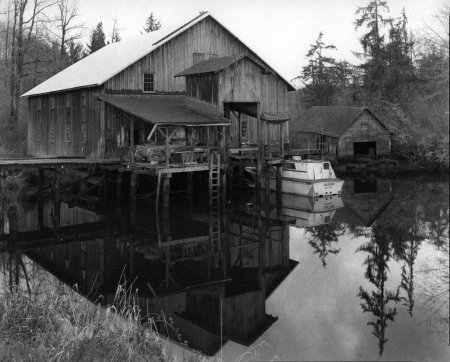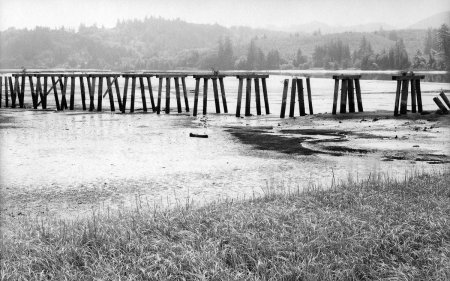 EUGENE, Ore. — (June 20, 2012) — A new exhibit featuring the work of Oregon artist and photographer Rich Bergeman is coming to the Museum of Natural and Cultural History at the University of Oregon. The exhibit Tidewaters will be on display from June 25 to Nov. 4, as a part of the museum's Pacific Northwest Artist Series.
EUGENE, Ore. — (June 20, 2012) — A new exhibit featuring the work of Oregon artist and photographer Rich Bergeman is coming to the Museum of Natural and Cultural History at the University of Oregon. The exhibit Tidewaters will be on display from June 25 to Nov. 4, as a part of the museum's Pacific Northwest Artist Series.
Bergeman's photographs document his multiyear project to explore the light, landscape and remnants of a way of life that once flourished along the navigable rivers of Oregon's Coast Range. As the fishing and timber economies of this region slip away, Bergeman searches for beauty in the transience and patina of aging places.
"I've always loved photographing in places where the past is more palpable than the present," Bergeman says. "On these rivers, time's passage is plainly seen — slowly decaying docks tilt into the tide, worn out fishing boats wait for one more run to sea and gnarled pilings that long ago outlived their purpose still climb out of the ebbing tide."
 The museum, 1680 E. 15th Ave., will host an artist's reception for the exhibit from 5 p.m. to 7 p.m. on Thursday, July 12. Bergeman will discuss his work, including his process and preference for traditional film cameras, as well as the recurring themes of endurance, continuity and light. The event is free and open to the public.
The museum, 1680 E. 15th Ave., will host an artist's reception for the exhibit from 5 p.m. to 7 p.m. on Thursday, July 12. Bergeman will discuss his work, including his process and preference for traditional film cameras, as well as the recurring themes of endurance, continuity and light. The event is free and open to the public.
Bergeman's work is the result of years of exploration along the Oregon Coast Range and studies done at local history museums from Astoria to Coos Bay to better understand the complex and many-layered history of the region. As a collection, his photographs are a commentary on the passage of time and the enduring potential of place, which can be redefined and re-imagined with every rise and fall of the tide.
The photographs in the Tidewaters exhibit are platinum/palladium contact prints made from large negatives, a traditional printing medium that dates to the 19th century. Known for permanence and long tonal scale, platinum prints are made by coating a fine art paper with a mixture of platinum, palladium and iron salts, and then exposing them to strong ultra-violet light for several minutes.
About the Museum of Natural and Cultural History
The UO Museum of Natural and Cultural History is open Wednesday through Sunday from 11 a.m. to 5 p.m. Admission is $3 for adults, $2 for seniors and youths ages 17 and under, and $8 for families (two adults and up to four youths). Museum members are admitted free. Guided tours are offered each Friday at 1:00 pm.
Contact: Rebecca Black, Marketing and Communications Specialist, 541-346-5083, rblack@uoregon.edu
Museum on Facebook: http://www.facebook.com/oregonnaturalhistory